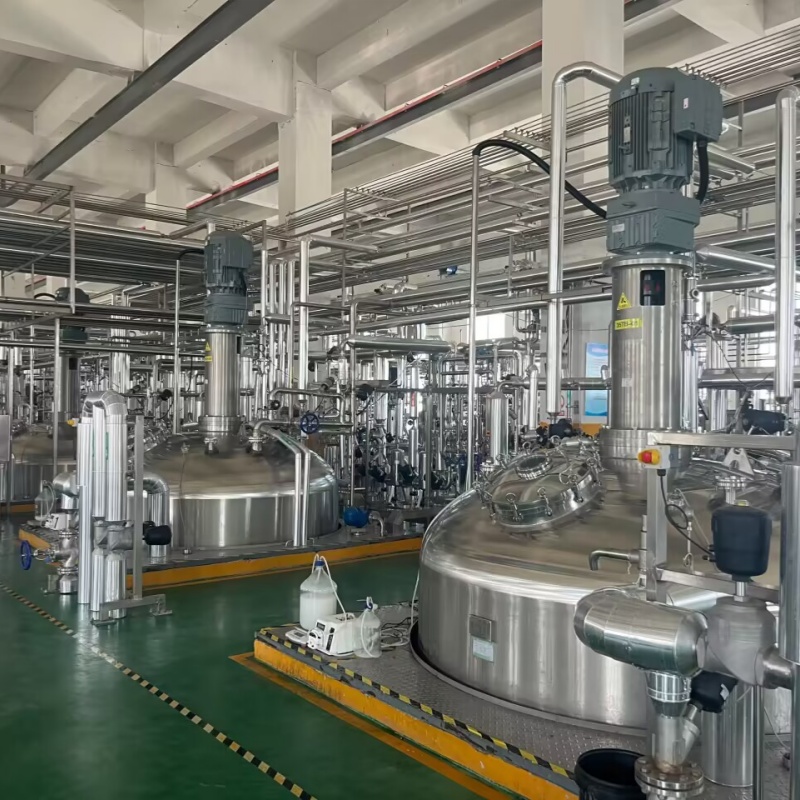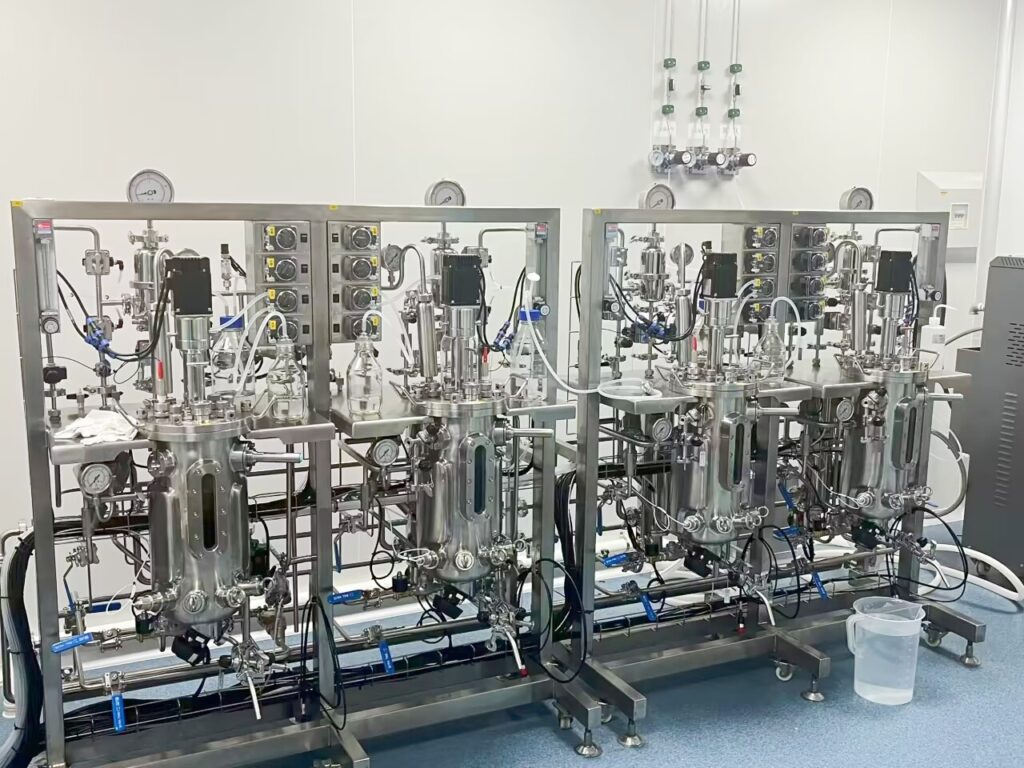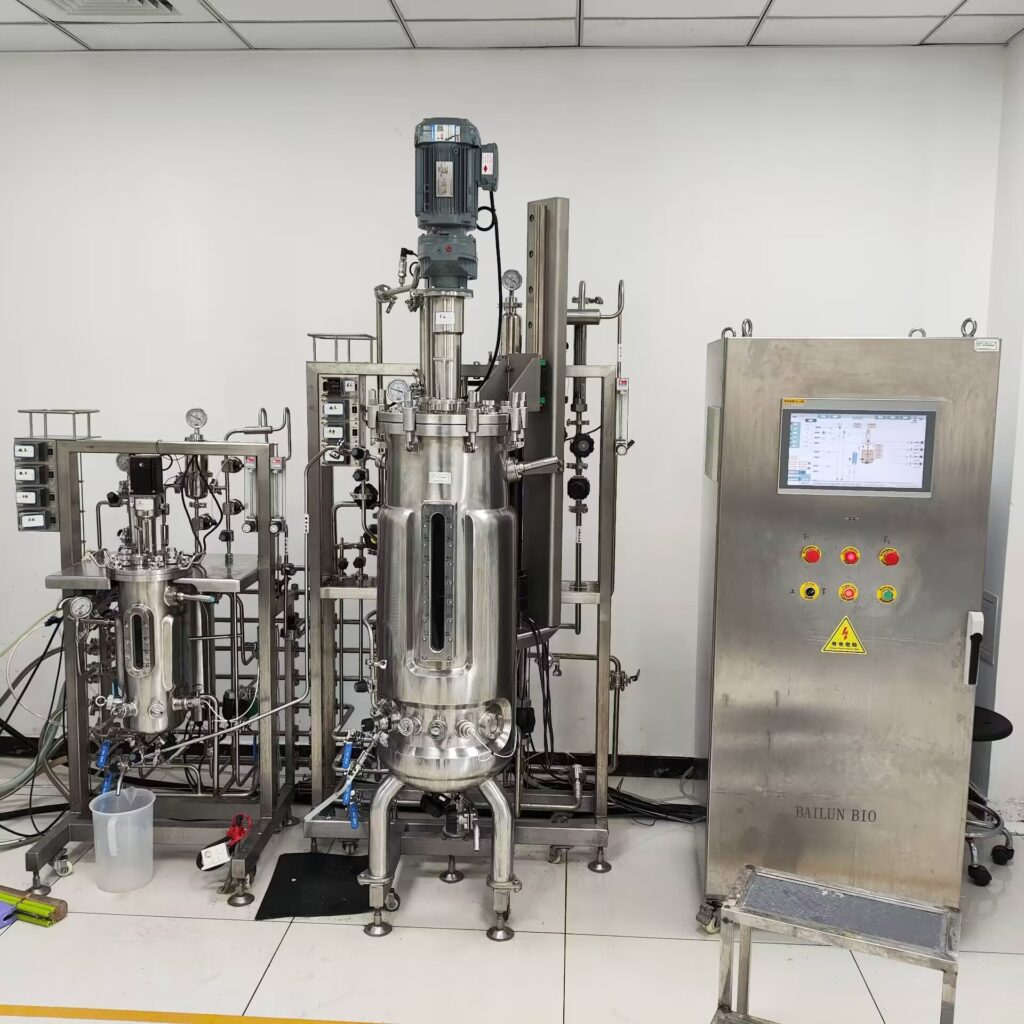
Bacterial fermentation is a metabolic process in which bacteria break down carbohydrates and amino acids to obtain energy for growth. Bacterial fermentation is an extraordinary process. During the fermentation of biological fermeners, bacteria can produce enzymes through metabolism, and organic substances such as sugar into alcohol, lactic acid or other products. The useful substances released by fermentation can be applied to various industries, so bacterial fermentation also provides unlimited possibilities for future biotechnology.
As the environment where bacteria live — bacterial fermenters, its development and innovation have always been watched.
Bacterial fermenters are a device widely used in biotechnology, pharmaceutical and food industries for large -scale cultivation of bacteria and other microorganisms. Bacterial fermenters provide controllable environmental conditions, such as temperature, pH, oxygen supply, and nutrients to ensure that microorganisms grow and metabolize under conditions, thereby achieving a rapid production process.
According to the classification of the needs of microbial growth and metabolism, bacterial fermenters can be divided into aerobic fermentation tanks and anaerobic fermentation tanks, aerobic biological fermenters are suitable for the fermentation of enzymes, yeasts, antibiotics, amino acids, vitamins and other products, and need strong ventilation and stirring to improve the mass transfer coefficient of oxygen in the fermentation broth. The anaerobic biological fermenter does not require aeration, and is suitable for the fermentation of alcohol, beer, lactic acid and other products, and the structure is relatively simple.

The operation step of the bacterial fermenter
Preparation stage:
-Add the sterilized medium into the stirred tank fermenter and start the mixing system to mix it evenly.
-Adm the temperature control system so that the temperature in the stirred tank fermenter reaches the set value.
-Inseptically, a sterile air is introduced to ensure the oxygen supply in the stirred tank fermenter.
Inoculation stage:
-Cap the pre -cultivated seed solution into the stirred tank fermenter and start the fermentation process.
Fermentation stage:
-In the fermentation process, maintain the uniform mixing of the medium by the stirred tank fermenter system, and continuously provide oxygen through the ventilation system.
-The temperature control system and pH control system monitor and adjust the temperature and pH value in the stirred tank fermenter to ensure that microorganisms grow under conditions.
-Dynate the monitoring system records the parameters during the fermentation process in order to facilitate subsequent analysis and optimization.
Harvest stage:
-After the fermentation is over, stop stirring and ventilation, discharge the fermentation solution through the discharge port, and perform subsequent treatment and extract the target product.
Advantages of bacterial fermenters
- High production efficiency: Increase the growth rate and output of microorganisms by providing excellent growth conditions.
- Strong controllability: It can accurately control key parameters such as temperature, pH value, and oxygen supply to ensure the stability and consistency of the fermentation process.
- Automation operation: Modern stirred tankfermentersare equipped with advanced monitoring and control systems that can realize remote monitoring and automated operations and reduce artificial intervention.
- Wide scope of application: suitable for the cultivation of a variety of microorganisms, including bacteria, yeast and fungi, which are widely used in the production of antibiotics, enzymes, organic acids and biofuels.
- Easy maintenance: reasonable structure design, easy cleaning and maintenance, extending the service life of the equipment.
Industrial application of bacterial fermenters
Bacterial fermenters have brought revolutionary changes in many industries. It is the key to the production of food, drugs and even fuels. At the same time, it can optimize production efficiency. It is a rare high -quality biological fermenter equipment.
The food industry
The bacterial fermenter has a pivotal effect in the food industry. From the use of bacterial fermenters to convert sugar or starch into condiments such as acetate, soy sauce, and use the bacterial fermenter to make wine (such as beer, wine), use yeast and bacteria Ferment, produce alcohol and other flavors.
From kimchi to yogurt, the substances produced by the fermentation of bacterial fermenters are unique food in the world. The process of using bacterial fermenter fermentation products can not only save food, but also give food unique flavors.
Pharmaceutical industry
The biological fermenter is widely used in the pharmaceutical industry, especially in the production of antibiotics. Many antibiotics are produced by fermentation by bacterial fermenters.
In 1928, Scotland bacterian Alexander-Fleming discovered the world’s first antibiotic-penicillin. Picomycin, which is naturally fermented by peniculin fungi, changed the pattern of bacterial infection treatment and saved the lives of countless people.
Now, the production of penicillin produced by peniculin fermented by bacterial fermenter has been further improved in terms of yield, which has made the pharmaceutical industry a greater breakthrough.
In addition to penicillin, bacterial fermenters are also applicable to many other antibiotics, such as rinomycin, galacin, and erythromycin that depend on specific bacterial fermentation processes for large -scale production.
Enzyme production
Bacterial fermenters, as a carrier of microbial fermentation, also help to make complex enzymes that play a key role in various metabolic disorders.
Enzyme is a type of biomolecules with catalytic effects, which are widely used in food processing, detergent manufacturing, textile processing, and construction. The enzymes produced by bacterial fermenter include proteases for washing powder, leather treatment and food processing, and the food and beverage industries, especially amylase, especially used in the glycation process.
The production of enzymes of bacterial fermenters breaks through traditional biological science and technology, pushing biological fermentation technology to a new climax.
There are still many uses for bacterial fermenters, such as amino acids, biofuels, and organic acid production. We won’t go into details here.
In short, the bacterial fermenter, as a fast microbial training tool, has played an important role in various industries with its good performance and extensive applicability.
With the continuous advancement of biotechnology, the design and operation of bacterial fermenters are constantly optimizing. The future development trend may include more intelligent control systems, more efficient fermentation and waste treatment systems, and more diverse microbial training conditions, providing more reliable and fast solutions for microorganism training. I believe everyone is looking forward to more intelligent and more environmentally friendly bacterial fermenters that can enter the biological fermentation market earlier, bringing more possibilities to people.

